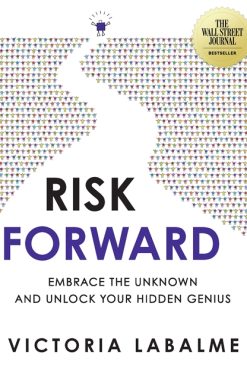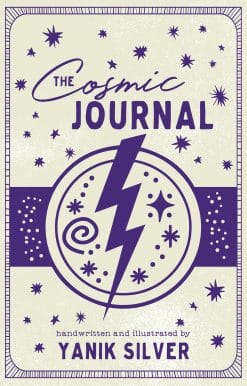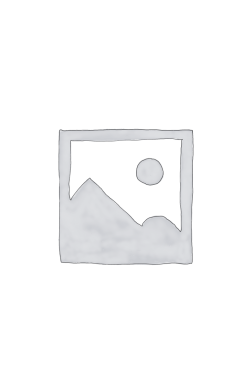What To Do When There’s Too Much To Do: Reduce Tasks, Increase Results, and Save 90 Minutes a Day
13.00 JOD
Please allow 2 – 5 weeks for delivery of this item
Add to Gift RegistryDescription
In today’s world of rapid, disruptive change, strategy can’t be separate from execution—it has to emerge from execution. You have to continually adjust your strategy to fit new realities. But if your organization isn’t set up to be fast on its feet, you could easily go the way of Blockbuster or Borders. Laura Stack shows you how to quickly drive strategic initiatives and get great results from your team. Her LEAD Formula outlines the Four Keys to Successful Execution: the ability to Leverage your talent and resources, design an Environment to support an agile culture, create Alignment between strategic priorities and operational activities, and Drive the organization forward quickly. She includes a leadership team assessment, group reading guides, and bonus self-development resources. Stack will equip you with the knowledge, skills, and inspiration to help you hit the ground running!
Additional information
| Weight | 0.27 kg |
|---|---|
| Dimensions | 1.4 × 14.13 × 21.59 cm |
| Format | |
| language1 | |
| Pages | 192 |
| Publisher | |
| Year Published | 2012-7-2 |
| Imprint | |
| Publication City/Country | USA |
| ISBN 10 | 1609945395 |
| About The Author | Laura Stack, MBA, CSP, is America’s Premier Expert in Productivity. Her talks help business leaders execute more efficiently, boost performance, and accelerate results in the workplace. Her company, the Productivity Pro, Inc., helps leaders turn strategy into performance and achieve maximum results in minimum time. She’s the author of six books. |
“This book will give you the tools you need as a leader to get more done yourself and through others. Laura Stack really is ‘the Productivity Pro.’” —Mark Sanborn, President, Sanborn & Associates, Inc., and author of You Don’t Need a Title to Be a Leader “Stack has captured in this book what those select few great leaders know: you cannot strategize your way to greatness. You execute your way there! A must-read for anyone who wants better results!” —Peter Sheahan, President, ChangeLabs “A how-to for leaders who are serious about results. Make time to read this book—then thank Laura for all the time you save on future projects!” —Harvey Mackay, author of the #1 New York Times bestseller Swim with the Sharks without Being Eaten Alive |
|
| Table Of Content | Introduction: The Case for Reduction Saving Our Own Lives Harsh Realities The Solution Brand-New Model: The Productivity Workflow Formula Step One: Determine What To Do Why Do You Have So Much to Do? What Is Your Productive Value? Tracking Down Time-Wasters Where Does Your Time Go? To-Do Lists: Tracking What's Left Triage: Wartime Prioritization Summary: PWF Step 1 Checkup Step Two: Schedule Time to Do It About that 4-Hour Workweek Idea Scheduling 101 Further Reducing Your Commitments Learn to Say No–And Make it Stick Rescuing Your Time from Meetings In the Decision Comes the Dilemma Summary: PWF Step 2 Checkup Step Three: Focus Your Attention Driven to Distraction Handling External Distractions Heading Off Internal Distractions Slipping the Electronic Leash Focus Aids The Zen of Avoiding Distraction Summary: PWF Step 3 Checkup Step Four: Process New Information Taming the Information Glut Filing Precepts Your Personal Time Management System Basic Information Handling The 6-D Information Management System The E-mail Decision Tree Summary: PWF Step 4 Checkup Step Five: Close the Loop Organized Implementation The People Problem Handling Micromanagers Reducing Inefficiencies and Breaking Bottlenecks The Quest for Constant Improvement Continued Progress Requires Constant Reevaluation Summary: PWF Step 4 Checkup Step Six: Manage Your Capacity Personal Energy Get Some Sleep Watch Your Diet Exercise Your Body Make Yourself Happier Maintaining Your Energetic Edge Summary: PWF Step 6 Checkup A Final Note: An Extra Hour–Or More The Productivity Workflow Formula (PWF) Self-Assessment Notes Index About the Author |
| Excerpt From Book | The Case for Reduction If you’re serious about your career, then you’ve probably read a number of books about time management and productivity in an effort to make better use of your workday. So what’s new about this one? What to Do When There’s Too Much to Do is unique in its approach to workflow, and I think you’ll find it a breath of fresh air in an overcrowded and increasingly redundant field. Simply stated, the central message is it’s better to do less, not more, so you can do better, more focused work. Many workers find this a startling concept, because they increasingly have to work harder and longer with fewer resources—and that’s precisely why my message is so very important. Over the last few decades we’ve learned to be superbly productive, yes, but in a way that can’t be sustained over the long haul. From a business perspective, productivity is the rate at which goods or services are produced per unit of labor. On a wider scale, this measure of corporate success is also a primary metric of the overall economic health of a nation. Collectively, we Americans are more productive today than at any time in our history.1 But just think about the factors motivating this productivity increase, especially in recent years. Many businesses have cut their staffs to the bone in an effort to save the bottom line; as a result, the truncated workforce must somehow do more with less, just like the woman who stopped me before my presentation that day. We’ve defaulted to working long hours just so we can keep our jobs. And it’s killing us. In fact, I think we’ve just about hit the ceiling of what we can accomplish by stretching ourselves so thin we’re practically transparent. Consider this worrisome factoid: According to a government report released in August 2011, American productivity declined for two consecutive quarters for the first time since 2008.2 The second-quarter decline for 2011 was a bit less than expected: an annual adjusted rate of 0.7 percent rather than the anticipated 0.9 percent (yay?).3 The bad news: 2011’s first-quarter productivity figure, originally estimated at 1.8 percent growth, suffered a sharp downward revision to reflect an actual productivity drop of 0.6 percent. Granted, we’ve experienced a minor economic expansion in the past few years. But the positive effects have been mostly limited to businesses, with very little trickle-down to individual workers. Indeed, as some observers have pointed out, many businesses posted productivity gains from early 2009 to late 2010 only because they had previously cut costs. In the process they pared down their workforces, requiring the workers they retained to work longer hours—often for the same compensation. This refusal to increase the average worker’s pay even while forcing them to work harder may seem draconian, and in one sense it is. Workers know that there are plenty of people lined up to take their jobs if they complain too much about the pay and long hours, and many employers press this fact to their advantage. But in a larger sense, the flat compensation growth just continues a trend visible in the statistics since 1980. According to a study released by the New York Times in September 2011, compensation grew steadily along with American productivity from 1949 until 1979, and then more or less flattened out—even as productivity skyrocketed.4 Productivity rose 80 percent from 1979 to 2009; compensation increased just 8 percent. That contrasts sharply with increases of 119 percent and 100 percent, respectively, in the 30 previous years. Basically, for the last three decades, American workers have been willing to accept insipid pay increases while pushing productivity through the roof. But now we’ve hit the wall. As a class, we’re exhausted, and any motivation to maximize productivity is mostly negative rather than positive. Recent economic growth may have been good for businesses, but it shortchanged the workers. We built on unstable economic ground … and now we’re starting to see the cracks in the foundation. Even with high unemployment rates, employers complain about not being able to find competent workers. SAVING OUR OWN LIVES So today, I preach the gospel of ruthless task reduction, because I honestly believe an abandonment of unnecessary chores, and a drastic triage of all that remains, is the only way to be consistently, profitably productive in this economy without destroying your health, your family life, and your joy. Many workers think that a willingness to do whatever it takes, at the expense of all else, can cure any workplace ailment. Their employers, and society at large, have trained them to think this way. But they never seem to understand a salient point here: you don’t have to kill yourself to prove your dedication to the company and produce the tremendous results required. And I mean exactly that. The Japanese have an entrenched tradition of working superhuman amounts of unpaid overtime, more to demonstrate company loyalty than to enhance productivity. It also drives high levels of karoshi, the practice of literally working yourself to death. This problem isn’t unique to Japan; Westerners have the same problem, though our medical establishment doesn’t really keep tabs on it as such. Is the possibility of a raise or promotion really worth risking your health? And let me emphasize the word “possibility” —after all, how can you ensure your hard work is even registering with the higher-ups? You can’t just try to outwork the other guy. Instead, get a handle on what’s really important in your organization, and focus on aligning business strategy with your day-to-day execution. Don’t just push and push and push until you can’t go on anymore. Ironically, this can limit your usefulness to your company rather than increasing it. HARSH REALITIES Working too many hours is demonstrably counterproductive, because it results in decreased productivity. Studies have repeatedly shown that a sixty-hour workweek results, on average, in a 25 percent decrease in productivity.5 The productivity numbers just get worse as the number of work hours increases, because exhaustion steadily erodes judgment and performance. Eventually, no matter how good your intentions, you hit a point of diminishing returns. If you go too far, your habits of overwork may harm your organization’s bottom line—the exact opposite of what you intended when you set out on your quest to prove yourself. The lesson here? You aren’t a robot. Long hours lead to physical and mental fatigue, which results in slower work, more mistakes, and wasted time. It may also lead to depression, which can spiral out of control if left untreated—as is often the case, because the person affected is too busy to take care of it. Depression comes with harsh penalties of its own, and they can feed back into the productivity issues and make them even worse. The old forty-hour workweek was originally struck as a compromise, as the best balance between productivity and overwork. Today, a forty-hour week isn’t plausible for many people, given the expectations or structures of their jobs. Some people continue to insist they function better with a more demanding schedule. But they fail to recognize the signs of when they’ve reached capacity. Are you willing to do what it takes to short-circuit a drop in performance? You’d take good care of any other tool, wouldn’t you? So why not take care of yourself? THE SOLUTION In the next six chapters, I’ll show you how to train yourself out of the overwork mentality. Reduce, reduce, reduce will become your new mantra, to the tune of about ninety minutes a day. This ninety-minute savings isn’t a “guess”—it’s what clients have told me these methods have saved them. Take for example the testimonial I received from Montague L. Boyd, CFP, Senior Vice President of Investments at UBS Financial Services: Prior to Ms. Stack’s training, we customarily had employees who stayed into the early evening hours in order to finish or just keep up with our workload. Ms. Stack spent a day with us and then three or four months later a second day. Ms. Stack worked with us to develop more efficient methods of intra-office communications. Ms. Stack also showed us how to prioritize daily items and to keep track of them. She showed us how to use Microsoft Outlook properly. There are far too many details to recount here; they made a huge difference. Now we regularly find that we can finish our work every day with time to spare. We operate with much less confusion and rarely if ever worry about those items that may “drop through the cracks”! They just don’t. There are six investment partners. We have a partner in charge of our Retirement Plan group and a Research partner. We operate smoothly now and communicate effectively in much less time. My estimate is that each of us saves about ninety minutes per day compared to our systems before Laura Stack. Six support staff went from a state of confused, stressed, and long hours to an efficient team. They finish most days well before “quitting time” and go home on time every night. Nobody has stayed late in months. Ms. Stack has lived up to her title as “The Productivity Pro.” She has shown us a path to accomplish more—much more—in fewer hours. Our staff believes they can take us through exponential growth with very little need for additional manpower. All of this extra time gives us the opportunity to think and find other ways to improve our business plan for greater success. In the same way I helped his team, I will show you how to logically reprioritize your work and shift your focus to the truly significant. You’ll learn to jettison old ideas that limit your productivity and begin re-examining your workload with new eyes. You’ll excise useless tasks and cut through redundant data to sharpen your focus to a keen edge. Instead of accepting your fate and allowing it to overwhelm you, step up and take your future in your own hands—and do what’s necessary to achieve a work-life balance that you can manage indefinitely. Unlearn the mistaken beliefs that serve as obstacles to productivity. Recognize your limits, trim away the fat, and adjust your attitude until you can plainly see that the real issue here is discovering what you can reasonably accomplish within the time available. If you do all this, you’ll eventually come to realize that there really is time enough in the day to do everything that matters. With the new system I offer you, it’s simple to rearrange your life so you can have a life outside of work. Not necessarily easy, mind you—but simple and straightforward to implement. With that in mind, I’d like to introduce the Productivity Workflow Formula™. A BRAND-NEW MODEL: THE PRODUCTIVITY WORKFLOW FORMULA™ (PWF) The PWF breaks down into six primary steps: 1. Determine what to do. Study your work requirements closely; triage your to-do lists; handle time-wasters; and decide to do only what really matters. 2. Schedule time to do it. Assign time slots and durations appropriately; say no when appropriate; make decisions quickly; and control your meetings. 3. Focus your attention. Hone your concentration to razor sharpness; shut out distractions; learn focus techniques; and avoid multitasking. 4. Process new information. Research effectively; file digital information; and quickly handle incoming e-mail, voicemail, and paper. 5. Close the loop. Determine what does and doesn’t work; reduce inefficiencies; solve people problems and bottlenecks; and tighten up systems as you go. 6. Manage your capacity. Focus on the physical factors affecting your energy; manage sleep, diet, exercise, and your own happiness. Graphically, the PWF looks like this: The model is circular by design, which suggests continuity, as well as a process that can (and should) be repeated again and again. In other words, you get into a continuum and don’t have to leave it; it just becomes part of your life. Plus, instead of thinking of productivity as a straight line from A to B (followed by … nothing) it becomes its own self-fulfilling prophecy. Each improvement gets you to a new place, instead of to some plateau you never leave again. THE PRODUCTIVITY WORKFLOW FORMULA™ (PWF) Determine + Schedule + Focus + Process + Close + Manage = PRODUCE If you incorporate the PWF into your life, you really can save yourself ninety minutes a day that you can use to live your life, instead of working it away. This may sound odd if you feel shackled to your desk now, but it really is possible to get more done while doing less work. You just need to separate the valuable wheat from the nonproductive chaff. So let’s take a look at how you can become more efficient, step by logical step. Go to www.LauraStack.com/WhatToDo to receive complimentary bonus material, tip sheets, and group discussion worksheets. Go to www.bkconnection.com/whattodo-sa to assess your strengths and improve opportunities around your PWF. We’ve highlighted Productivity Pro tips with a clock icon. If you’re seriously pressed for time, skim these tips and read the summary at the end of each chapter. |
Only logged in customers who have purchased this product may leave a review.






Reviews
There are no reviews yet.